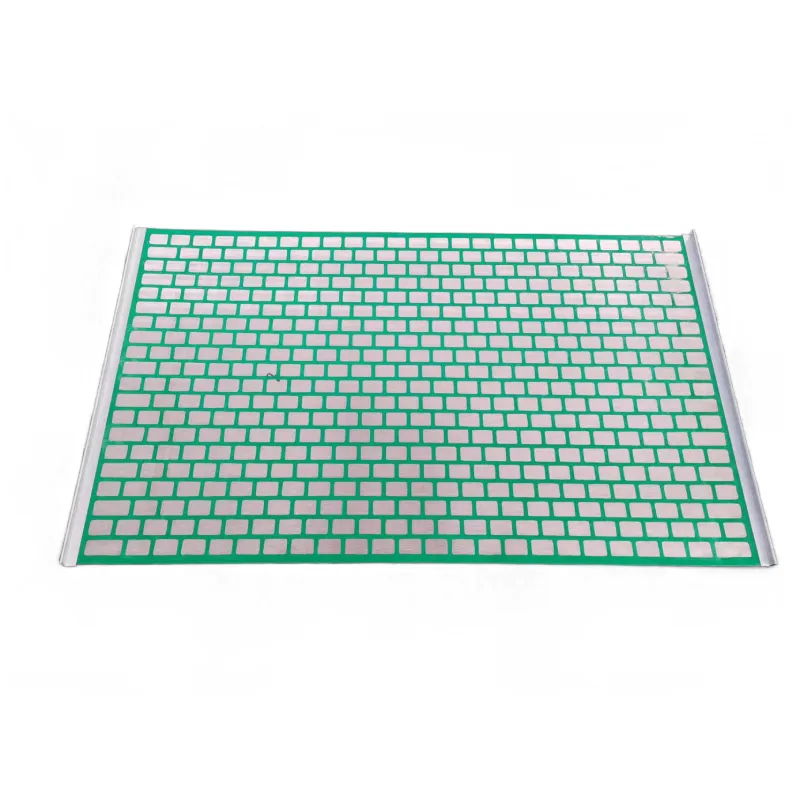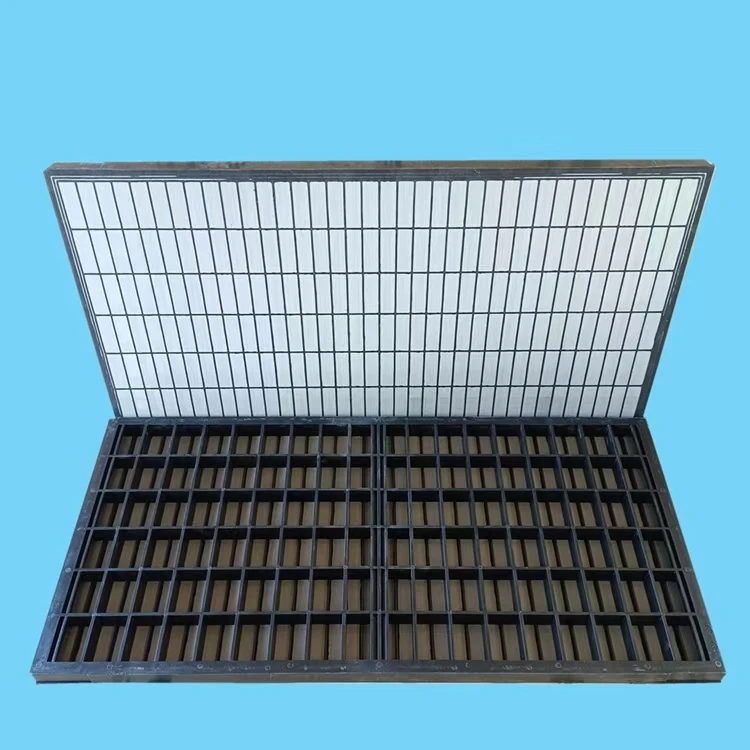- Industrial zone, South of Anping Town, Hengshui, Hebei, China.
- sales@hfpetromesh.com
- +86-18931809706
 Afrikaans
Afrikaans  Albanian
Albanian  Amharic
Amharic  Arabic
Arabic  Armenian
Armenian  Azerbaijani
Azerbaijani  Basque
Basque  Belarusian
Belarusian  Bengali
Bengali  Bosnian
Bosnian  Bulgarian
Bulgarian  Catalan
Catalan  Cebuano
Cebuano  Corsican
Corsican  Croatian
Croatian  Czech
Czech  Danish
Danish  Dutch
Dutch  English
English  Esperanto
Esperanto  Estonian
Estonian  Finnish
Finnish  French
French  Frisian
Frisian  Galician
Galician  Georgian
Georgian  German
German  Greek
Greek  Gujarati
Gujarati  Haitian Creole
Haitian Creole  hausa
hausa  hawaiian
hawaiian  Hebrew
Hebrew  Hindi
Hindi  Miao
Miao  Hungarian
Hungarian  Icelandic
Icelandic  igbo
igbo  Indonesian
Indonesian  irish
irish  Italian
Italian  Japanese
Japanese  Javanese
Javanese  Kannada
Kannada  kazakh
kazakh  Khmer
Khmer  Rwandese
Rwandese  Korean
Korean  Kurdish
Kurdish  Kyrgyz
Kyrgyz  Lao
Lao  Latin
Latin  Latvian
Latvian  Lithuanian
Lithuanian  Luxembourgish
Luxembourgish  Macedonian
Macedonian  Malgashi
Malgashi  Malay
Malay  Malayalam
Malayalam  Maltese
Maltese  Maori
Maori  Marathi
Marathi  Mongolian
Mongolian  Myanmar
Myanmar  Nepali
Nepali  Norwegian
Norwegian  Norwegian
Norwegian  Occitan
Occitan  Pashto
Pashto  Persian
Persian  Polish
Polish  Portuguese
Portuguese  Punjabi
Punjabi  Romanian
Romanian  Russian
Russian  Samoan
Samoan  Scottish Gaelic
Scottish Gaelic  Serbian
Serbian  Sesotho
Sesotho  Shona
Shona  Sindhi
Sindhi  Sinhala
Sinhala  Slovak
Slovak  Slovenian
Slovenian  Somali
Somali  Spanish
Spanish  Sundanese
Sundanese  Swahili
Swahili  Swedish
Swedish  Tagalog
Tagalog  Tajik
Tajik  Tamil
Tamil  Tatar
Tatar  Telugu
Telugu  Thai
Thai  Turkish
Turkish  Turkmen
Turkmen  Ukrainian
Ukrainian  Urdu
Urdu  Uighur
Uighur  Uzbek
Uzbek  Vietnamese
Vietnamese  Welsh
Welsh  Bantu
Bantu  Yiddish
Yiddish  Yoruba
Yoruba  Zulu
Zulu
- Afrikaans
- Albanian
- Amharic
- Arabic
- Armenian
- Azerbaijani
- Basque
- Belarusian
- Bengali
- Bosnian
- Bulgarian
- Catalan
- Cebuano
- Corsican
- Croatian
- Czech
- Danish
- Dutch
- English
- Esperanto
- Estonian
- Finnish
- French
- Frisian
- Galician
- Georgian
- German
- Greek
- Gujarati
- Haitian Creole
- hausa
- hawaiian
- Hebrew
- Hindi
- Miao
- Hungarian
- Icelandic
- igbo
- Indonesian
- irish
- Italian
- Japanese
- Javanese
- Kannada
- kazakh
- Khmer
- Rwandese
- Korean
- Kurdish
- Kyrgyz
- Lao
- Latin
- Latvian
- Lithuanian
- Luxembourgish
- Macedonian
- Malgashi
- Malay
- Malayalam
- Maltese
- Maori
- Marathi
- Mongolian
- Myanmar
- Nepali
- Norwegian
- Norwegian
- Occitan
- Pashto
- Persian
- Polish
- Portuguese
- Punjabi
- Romanian
- Russian
- Samoan
- Scottish Gaelic
- Serbian
- Sesotho
- Shona
- Sindhi
- Sinhala
- Slovak
- Slovenian
- Somali
- Spanish
- Sundanese
- Swahili
- Swedish
- Tagalog
- Tajik
- Tamil
- Tatar
- Telugu
- Thai
- Turkish
- Turkmen
- Ukrainian
- Urdu
- Uighur
- Uzbek
- Vietnamese
- Welsh
- Bantu
- Yiddish
- Yoruba
- Zulu
High-Quality Grating Galvanized Solutions Serrated, Catwalk & Bar Grating Supplier
- Introduction to grating galvanized
: characteristics and market overview - Technical advantages of serrated galvanized grating and galvanized catwalk grating
- Manufacturer comparison: evaluating quality, pricing, and service
- Customization options and design flexibility in galvanized bar grating
- Real-world application examples: data-driven insights
- Industry standards, certifications, and quality assurance
- Conclusion: Elevating projects with grating galvanized solutions

(grating galvanized)
Introduction to Grating Galvanized: Characteristics and Market Overview
Grating galvanized is a widely adopted structural product in the construction and industrial sectors, valued for its corrosion resistance, load-bearing capacity, and cost-effectiveness. As of 2023, the global galvanized steel grating market size surpassed USD 4 billion, experiencing a compound annual growth rate (CAGR) of 6.2%. Emerging trends include expanded use in infrastructure, transportation, and energy facilities due to its durability and reduced maintenance requirements.
The galvanization process, which involves coating steel with a layer of zinc, enhances the product’s lifespan by preventing rust and degradation. Critical applications range from walkways and flooring to catwalks and drainage covers. Increased investments in public infrastructure and industrial projects have fueled demand, with Serrated Galvanized Grating and Galvanized Catwalk Grating gaining notable traction for their safety and reliability. Such products offer a blend of strength, resilience, and versatility that aligns with modern project requirements.
Technical Advantages of Serrated and Catwalk Galvanized Grating
The technical superiority of serrated galvanized grating and galvanized catwalk grating is anchored in their advanced fabrication and structural engineering principles. Serrated surfaces provide enhanced slip resistance, significantly reducing the risk of workplace accidents—even when exposed to oil, water, or other contaminants.
Galvanized catwalk grating features high-load bearing bars joined by cross rods, delivering exceptional rigidity and stability. Laboratory tests reveal that such grating can withstand distributed loads exceeding 7,000 lbs per square foot. The galvanized coating delivers extra resistance, with a typical zinc layer thickness of 85-100 microns, extending the material's service life by up to 50 years in non-aggressive environments.
Further, galvanized bar grating offers ease of installation, flexible panel configurations, and compatibility with modular architectural designs, optimizing project scheduling and reducing labor costs.
Manufacturer Comparison: Evaluating Quality, Pricing, and Service
Choosing the right grating supplier involves analyzing multiple critical parameters such as pricing, quality standards, lead times, and after-sales support. Leading international manufacturers, including AMICO, Ohio Gratings, and Ningbo Jiulong, compete in quality certifications, production capacity, and custom engineering capabilities. The comparison table below outlines key metrics:
| Manufacturer | Certifications | Min. Order (sqm) | Typical Lead Time | Warranty | Average Price (USD/sqm) | Customization |
|---|---|---|---|---|---|---|
| AMICO | ISO 9001, ASTM A123 | 20 | 4 weeks | 3 years | 72-85 | Available |
| Ohio Gratings | ISO 14001, ASTM A36 | 50 | 6 weeks | 5 years | 78-92 | Available |
| Ningbo Jiulong | CE, SGS | 10 | 3 weeks | 2 years | 60-74 | Available |
As the table shows, Asian suppliers often offer competitive pricing and shorter lead times, while North American manufacturers excel in extended warranties and stringent compliance with local standards. Users should consider their project’s geographic location, complexity, and timeline when selecting partners.
Customization Options and Design Flexibility in Galvanized Bar Grating
One of the principal strengths of galvanized bar grating lies in its adaptability to unique project requirements. Clients can specify bar spacing, thickness, cross-rod type, length, and width based on targeted load capacity and environmental conditions.
For instance, custom serrated profiles are available for sites with high foot traffic, oil exposure, or steep inclines, bolstering safety. Galvanized catwalk grating designs may include toe plates, kick plates, or custom edge banding to ensure compliance with specific safety codes.
Modular panel systems can be engineered to fit irregular layouts or retrofitted into existing infrastructure, with CAD-based fabrication minimizing dimensional variances to less than ±2 mm. Grating finishes can also be selected between hot-dip galvanization and electro-galvanization, depending on budget and exposure levels.
Manufacturers further enable end-users to personalize branding, incorporate anti-vibration dampers, or introduce integrated fastening solutions, facilitating seamless project execution from fabrication to installation.
Real-World Application Examples: Data-Driven Insights
The versatility of grating galvanized products is reflected in their diverse deployment across sectors. For instance, a 2022 petrochemical facility in Saudi Arabia utilized 20,000 sqm of serrated galvanized grating for maintenance walkways, with post-installation reports indicating a 47% reduction in slip incidents compared to previous flooring.
In the transportation sector, galvanized catwalk grating was selected for a major Brazilian railway bridge, handling static loads exceeding 10,000 lbs and withstanding harsh coastal humidity without signs of corrosion over a 5-year period. Likewise, municipal wastewater facilities in Germany installed galvanized bar grating for drainage covers, achieving annual maintenance savings of USD 120,000 due to lower repair frequency.
Such case studies underscore the importance of appropriate material selection and precise customization, as data consistently demonstrates improvements in safety, durability, and cost-efficiency.
Industry Standards, Certifications, and Quality Assurance
Stringent adherence to industry standards is pivotal for ensuring the reliability of galvanized grating systems. International benchmarks, including ASTM A123 (zinc coating processes), ISO 9001 (quality management), and EN 1090 (structural components), govern material selection, fabrication, and surface treatments.
Manufacturers employ laboratory testing—such as salt spray testing, load deflection testing, and dimensional analysis—to validate that galvanized bar grating meets or exceeds specified requirements. Suppliers may also provide traceability documentation, mill certificates, and third-party inspection reports upon request.
The table below summarizes the most critical standards and testing protocols:
| Standard | Testing Method | |
|---|---|---|
| ASTM A123 | Hot-dip zinc coating on iron/steel products | Coating thickness, adhesion, visual checks |
| ISO 1461 | Requirements for galvanization of fabricated iron/steel | Salt spray, thickness measurement |
| EN 1090 | Execution of steel structures and components | Mechanical load, dimensional evaluation |
Compliance ensures consistent product quality and guarantees that the grating system performs reliably throughout its expected service life, safeguarding both people and assets in demanding applications.
Conclusion: Elevating Projects with Grating Galvanized Solutions
Embracing grating galvanized as a core material delivers a strategic advantage in modern infrastructure and industrial projects. The synthesis of technical innovation, proven safety records, robust lifecycle cost savings, and responsive customization elevates both functionality and aesthetic appeal. As demonstrated by comparative manufacturer data, project-specific customization, and real-world performance, grating galvanized consistently outperforms alternatives in diverse environments.
With adherence to rigorous quality standards and the ability to tailor products to exact needs, stakeholders can confidently specify serrated galvanized grating, galvanized catwalk grating, or galvanized bar grating to optimize performance and value.
By selecting reputable suppliers and leveraging advanced engineering, projects can achieve superior safety, decreased maintenance liabilities, and long-term operational efficiency—securing a firm foundation for sustainable growth and innovation.

(grating galvanized)
FAQS on grating galvanized
Q: What is grating galvanized and why is it used?
A: Grating galvanized refers to steel grating that has been coated with a layer of zinc for corrosion protection. It is widely used for flooring, walkways, and platforms in industrial environments. The galvanization process ensures durability and a longer service life.
Q: What are the advantages of serrated galvanized grating?
A: Serrated galvanized grating has a toothed surface that provides excellent slip resistance. The galvanized layer also prevents rust and ensures longevity. This makes it ideal for areas where safety and durability are priorities.
Q: Where is galvanized catwalk grating commonly installed?
A: Galvanized catwalk grating is often used in industrial plants, factories, and workshops for elevated walkways. Its strength and anti-corrosion properties make it suitable for both indoor and outdoor catwalks. Installation is straightforward due to its modular design.
Q: How is galvanized bar grating different from regular steel grating?
A: Galvanized bar grating includes a zinc coating that protects against corrosion, unlike regular steel grating. It is designed for superior durability in harsh environments. This makes it preferable for applications requiring resilience and low maintenance.
Q: How is grating galvanized maintained after installation?
A: Grating galvanized requires minimal maintenance due to its protective zinc coating. Regular cleaning and inspection for physical damage are recommended. This helps ensure its maximum lifespan and performance in any application.
-
Why Our Shaker Screen for Sale Stands Out in Every ApplicationNewsAug.08,2025
-
Unmatched Efficiency with Premium Shale Shaker Screen TechnologyNewsAug.08,2025
-
Reliable, Durable, and Cost-Effective: Press Locked Steel Grating SolutionsNewsAug.08,2025
-
Precision Strength with Welded Steel Bar GratingNewsAug.08,2025
-
Perimeter Safety Netting: The High-Strength Shield for Elevated Safety SolutionsNewsAug.08,2025
-
Maximize Performance with Steel Walkway GratingNewsAug.08,2025